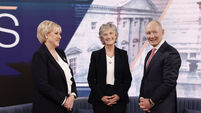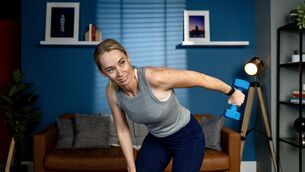Watch: Expert tips for learning how to run at any age — and sticking with it
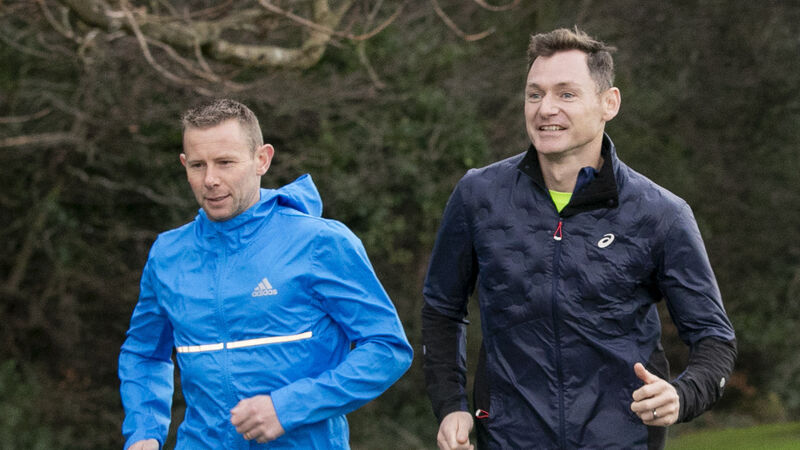
Emmet Dunleavy & David Gillick in Marlay Park, Dublin. Photo: Gareth Chaney
It's the dog days of early January, your bank account is empty, your midriff is still carrying some Christmas calories, and there’s nothing on television. You had a New Year’s Eve resolution list that almost certainly included running.
January is the busiest time for new members to join running clubs, say David Gillick, a former world-class track sprinter, and Emmett Dunleavy, the coach who retrained Gillick to run longer distances. It’s a month when footpaths and boreens thunder to the sound of running soles hitting the surface. And despite its dark and dank conditions, January is a great time to start, Dunleavy says.
“You usually have minimum distractions in January, and you’re usually a bit broke after Christmas and you want to spend a bit of time on something that isn’t going to cost you anything,” he says.
“Weather-wise, it’s tough, but once you’ve your shoes, hat, gloves and jacket, you’re good to go.”
Dunleavy, originally from Co Sligo and now living in Dublin, runs Perfect Pacing, through which he offers coaching to athletes from amateur to elite level. One of those was Gillick, a broadcast star of the most recent Paris Olympics, thanks to his insightful and empathetic trackside interviews on RTÉ, and a man used to staring down a running track. Yet both men are candid about where Gillick was when he sought to switch from retired sprinter to distance runner.
“David was a perfect example,” Dunleavy says. “He was very fit, was doing a lot of cycling, was a world-class sprinter, but when we did the lactate testing at the start, he was on the floor for fitness as an endurance athlete: That side of his physiology was completely under-developed.”
Gillick, who is also an ambassador for Parkrun, knows that at this time of the year people of all ages will step out for exercise, maybe for the first time in a long time, maybe for the first time ever. He is evangelical about the benefits.
“I think you look at it from two sides,” Gillick says. “There is the individual perspective: Health and wellbeing and mental health and even just giving yourself a bit of time. Getting out and being active is good for clarity and mental health and getting away from the madness of day-to-day life, whatever that is.
“Then, throw in if you go with another person or group or club: There is the social element. We, maybe, don’t value that as much, but consider the camaraderie, the fun, the chat. You are engaging with someone else. It’s another benefit of exercise, as well as the individual element of getting the heart rate up, energising the body, and improving overall fitness.”
Dunleavy trains runners at Kilcoole Athletic Club in Co Wicklow and says that around two-thirds of those ’new year’ participants are still running by March, due in large part to being in a group.
He and Gillick are a goldmine of tips for the novice or recovering runner, centring around the idea of not doing too much too soon, and building up strength and conditioning over time.
The one financial cost is the right pair of shoes, both say. “Getting yourself into a running shop and having yourself fitted is the best way,” Dunleavy says.
This means focus on how your feet hit the ground, reducing the likelihood of developing sprains or blisters, with a decent pair of runners likely to give you between 965km and 1,200km of service, or a year of running.
After that, ensure the rest of your running wear is comfortable: Not too tight and not too loose, with insulation for those cold January mornings and evenings.
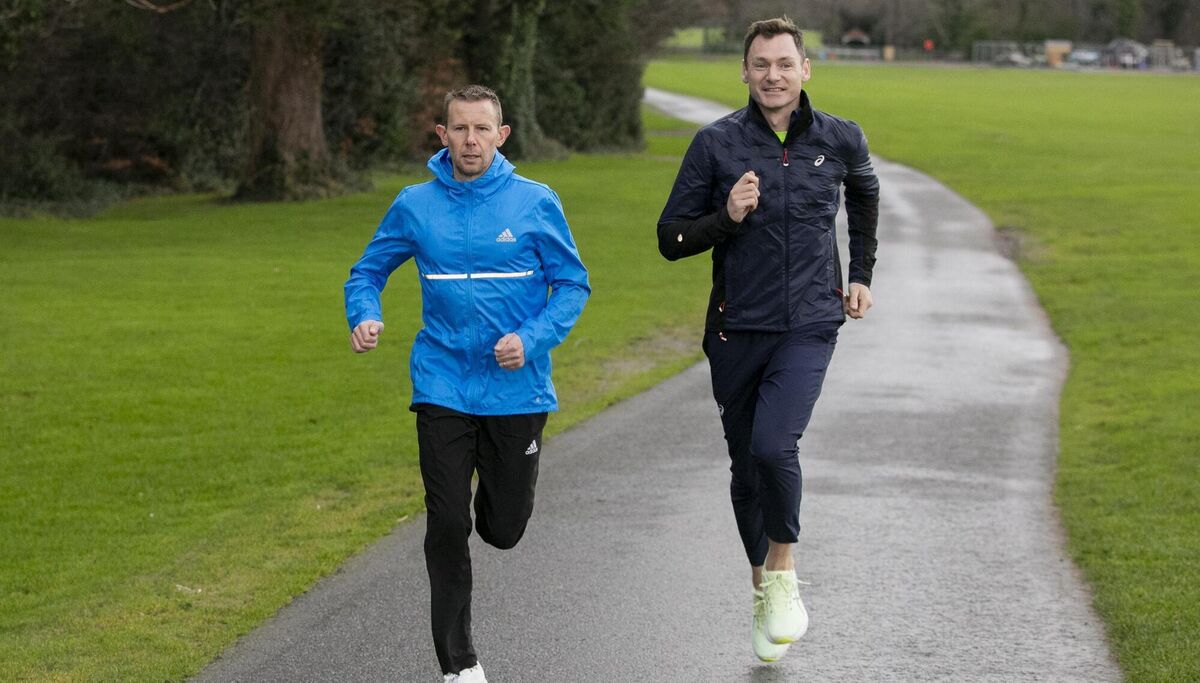
Gillick cites research that suggests it takes 60 days to build a sustainable running habit. “You have to allow it that life will get in the way. Start small: Once in the week, once at the weekend, and, if you can, aim for a Tuesday, Thursday, and Saturday. I think the best approach would be looking at it in four-week blocks and evaluate that. At end of that, ask, ‘How have I felt? Did I notice any differences’?”
Gillick says steer away from running particular distances and instead look at the block of time. Dunleavy agrees, outlining how a first session would last 20 minutes, with a one-minute walk followed by a one-minute light jog.
Gillick advocates running from one lamppost to the next, and then walking the next stretch. He also recommends a few squats or dynamic exercises beforehand, to get the body active, but with stretching more important after the run to help the lower leg muscles, which take the pounding, to recover.
Depending on your age, you should allow 24 to 48 hours between each running session, Dunleavy says.
“The principles remain largely the same for athletes, especially beginners, regardless of age. The key thing to keep in mind is the rate of recovery. Our ability to recover from hard workouts diminishes as we age. This begins in our 40s and accelerates in our 50s. The key advice is to allow more recovery (extra days) between hard runs or workouts. As with all things in fitness, it varies by individual.”
So far, so straightforward, but while the mechanics of building up your internal running system will unfold over weeks, months and maybe even years, there are other, almost instantaneous benefits.
Gillick has been candid in the past about his mental-health struggles, particularly after retiring from top-level athletics. He found that the very act of getting out and running a distance provided a salve against some of those pressures.
“In my previous life, it was hard: If you’re not puking trackside, it’s not a training session,” he says. “Whereas, on the other side, I can flick that mindset: It’s long-term gain, you can smell the fresh cut grass, feel the sun on your face, which I would never have done before.
“The mental-health benefits came in. I actually began to enjoy running; it made me feel good about myself. Then, you can get to the stage when you challenge yourself, maybe with a little race, but, first and foremost, it’s about doing something you enjoy.”
Not everyone is an elite runner, but It’s a point made by numerous people who enjoy taking on long distances: You go on a mental journey to accompany the one made by putting one foot in front of the other.
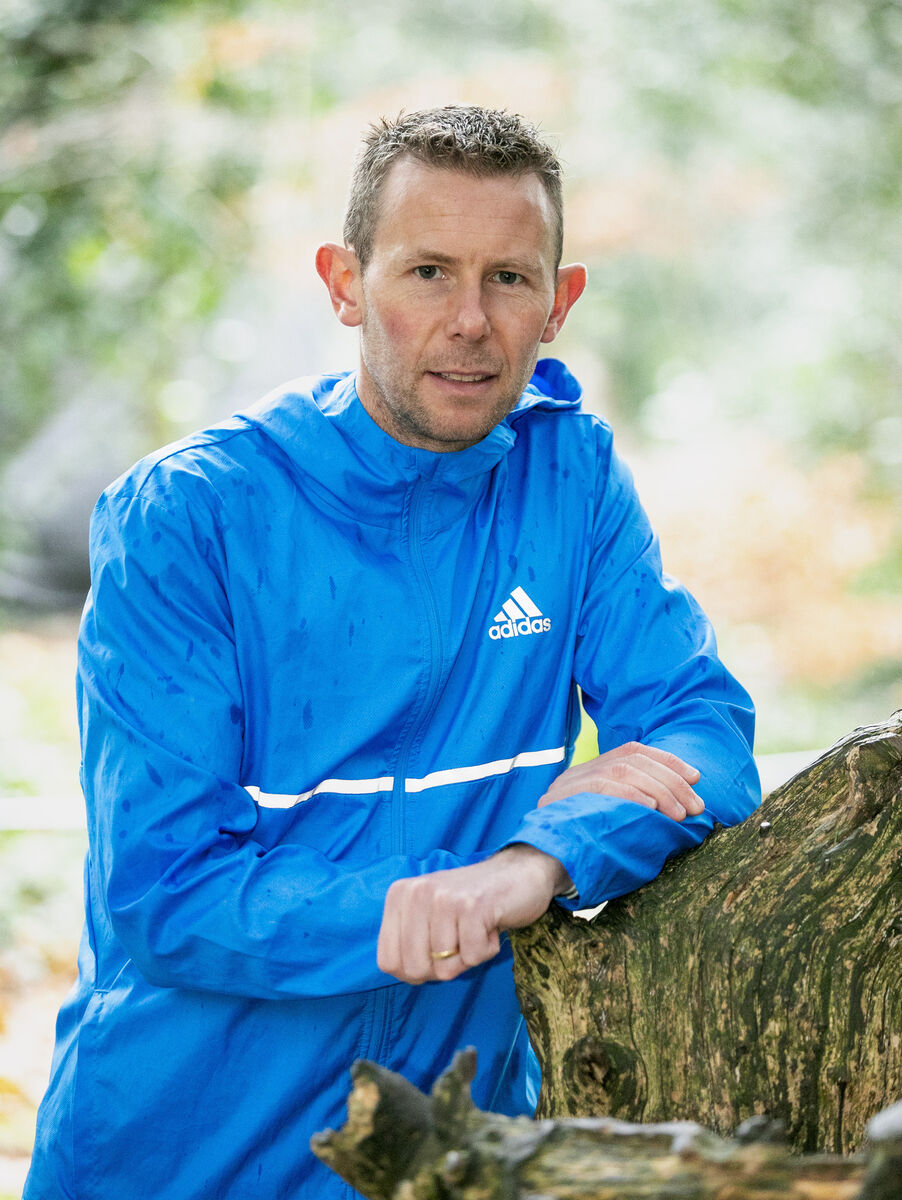
There are a number of examples of late bloomers, none more so than Sinead Diver, who moved to Australia two decades ago and who began running, almost by accident, in a fun run at the age of 33. She is now a world-class marathon runner and has competed in the Olympics for Australia. Or there’s the acclaimed Japanese novelist Haruki Murakami, a seasoned ultramarathon runner, who, also at 33, swapped his career running a jazz bar — and a 60-a-day smoking habit — for running the streets of Tokyo.
But let’s get back to the start. According to Dunleavy, in the first months, the pace of any run should allow you to have a conversation at the same time. He says that even elite runners conduct 90% of their training at such a pace, adding, “If you’re not doing that, you’re going too quickly.”
Next up: Apps and smart technology. Gillick says he uses the Strava app, but suggests that someone at the start of their running journey might find it disheartening if their numbers compare unfavourably to others’.
Dunleavy has another take on it.
“It’s really important to have some way of recording what you do right from day one,” he says.
“We under-appreciate how much progress you make in the first three to four weeks. If you don’t record it, it’s very, very hard to quantify how much progress you have made. If, after five weeks, you can run continuously for half an hour, that’s huge progress.”
But there are no hard-and-fast rules. According to Gillick, “Some people are running on the pavements, and they say, ‘I need something different’. All of these things will come once you are out and running.
“You might want to change the pace, change the terrain, a different environment, and people can get a kick out of that. It’s very individual, it’s very different, and the great thing is it’s a never-ending variety.”
That could mean hill running, even mountain running, or hitting the dunes, or the parks or fields. In his role as Parkrun ambassador, Gillick can see how popular a simple jog can be, with 110 Parkruns around the country, all free. The main thing, he says, “is giving it a go.”
- Follow Emmett Dunleavy’s four-week introduction to running on irishexaminer.com

Celebrating 25 years of health and wellbeing





